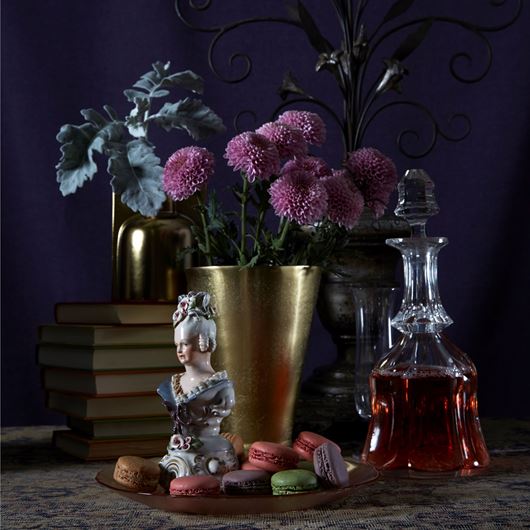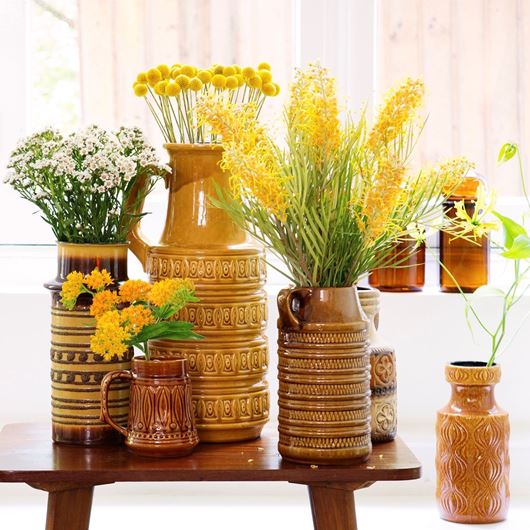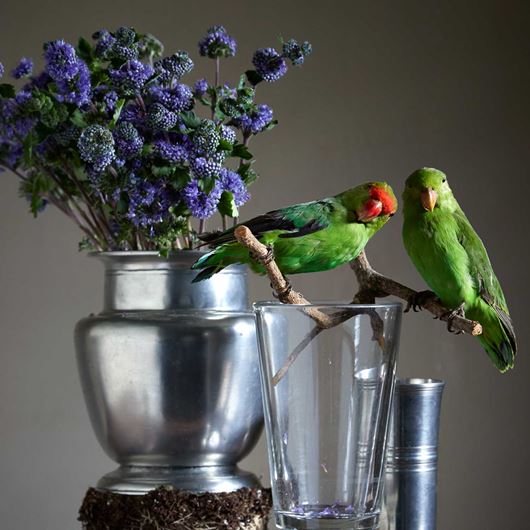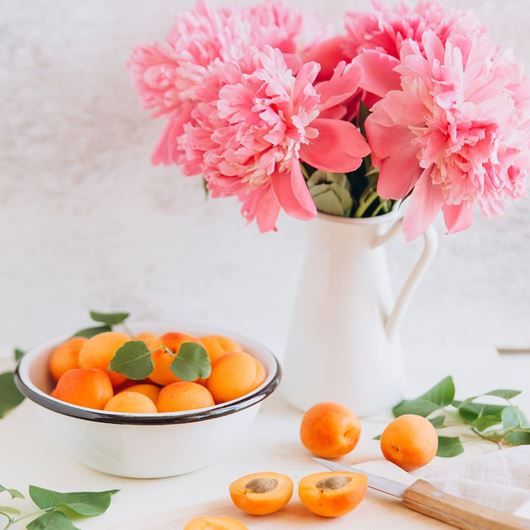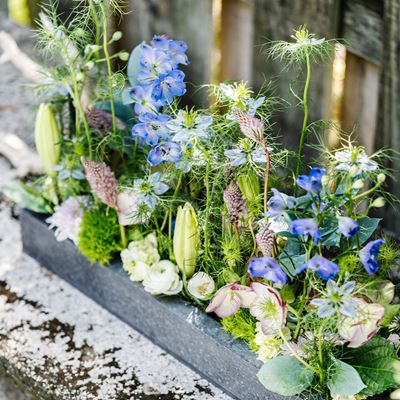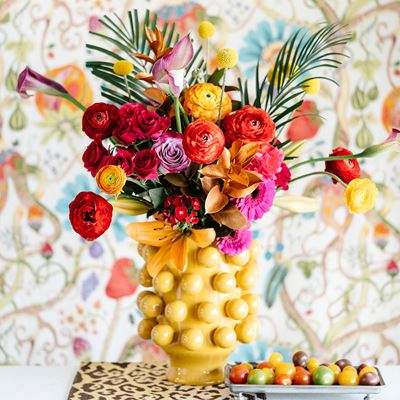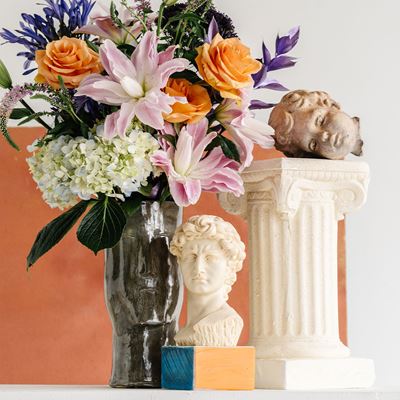Completing our 2023 lookbook series, our sixth and final trend, ATMOSPHERIC, pays homage to our planet's habitats at large. This trending macro view gathers an immersive palette of cool hues, borrowed from the oceans and forests, and pairs it with glowing bright white.
Singular Sensations: Mixing Flowers Is Not the Only Solution for Beautiful Vases, in Fact for Some It’s a No-No.
If you’ve ever looked at a vase filled with only one type of flower and thought how beautiful it was with its no-frills appeal, you’re not alone. This pared-down style of design is showing up everywhere consumers look for inspiration. Popular magazines, social media (especially Pinterest), television sets from Ellen DeGeneres’ coffee table flowers to the party décor on The Real Housewives of Orange County are filled with arrangements that comprise only one type of flower.
JOIN THE CLUB
The fancy name for this uncomplicated flower arrangement is monobotanical. Even the National Garden Club has recognized this type of arrangement as a legitimate design style – explaining that it is “A creative design using multiple parts of a plant of one family or genus. Parts may be stems, blooms, foliage, roots, fruit, etc.” The garden club members have even go so far as making monobotanical arrangements a category for competition, yet for everyday purposes, this popular new design style is not nearly as complicated as the NGC makes it sound. Unless you are planning on being a part of a garden club contest, this idea simply means bouquets or arrangements that contain only a single species or type of flower.
PUT A RING ON IT
Much of this one-flower-only popularity is due to the simplification of bridal bouquets. Pushed forward by the growing fascination of DIY weddings, countless how-to tutorials, and instructional videos demonstrate the ease of the single-flower bouquet. It’s easy enough for industrious brides whose skills are limited since mixing flowers might prove more complicated than expected.
TABLE COLLECTIONS
Similarly, the single-flower idea is finding its way to the center of the dining and party table. As the lone flower arrangement centered on a table seems more and more old fashioned, flower designers and event planners are replacing the traditional singular centerpiece with more fashionable grouping of smaller arrangements that are combines with candles and decoratives. These groupings or tablescapes most commonly segregate flowers into their own individual container thus promoting the idea of one-flower-only decorating.
MAKE IT WORK FOR YOU
Creating these single-flower designs may at first seem too easy for your skill level as a designer, but there are clever ways to add a signature touch to your designs that lend distinction and thoughtfulness to these ultra simple arrangements.
Here are some simple tips for adding distinction to your creations:
UNDERWATER MAGIC. Try dropping a few decorative river stones or pretty sea shells into clear glass vases for added detailing. Remember to remove any debris from your underwater additions as cloudy water can diminish the presentation.
LITTLE BOW PEEP. A simple shoe-string bow or a loop-free tie of ribbon can add a nice designer touch to the vase or container. Choose a color that appropriately matches or accents the flowers.
ANIMAL ATTRACTION. As trite as this may seem, people love seeing butterflies, dragonflies, and bumble bees hovering over their flowers. Keeping with the simplicity of this design style resist the temptation to add more than one.
RAINBOW CONNECTION. Just because you choose to use only one type of flower, there’s no reason that you can’t mix up the colors. Rainbow roses and crazy daisies can add a little pizazz to your same-flower arrangements.
GROUP THERAPY. Try displaying these single-flower pretties in a grouped collection of small containers. Choose vessels that you've collected to fit common theme or mix and match odd finds for an eclectic vibe that mirrors the current "random" trend.
